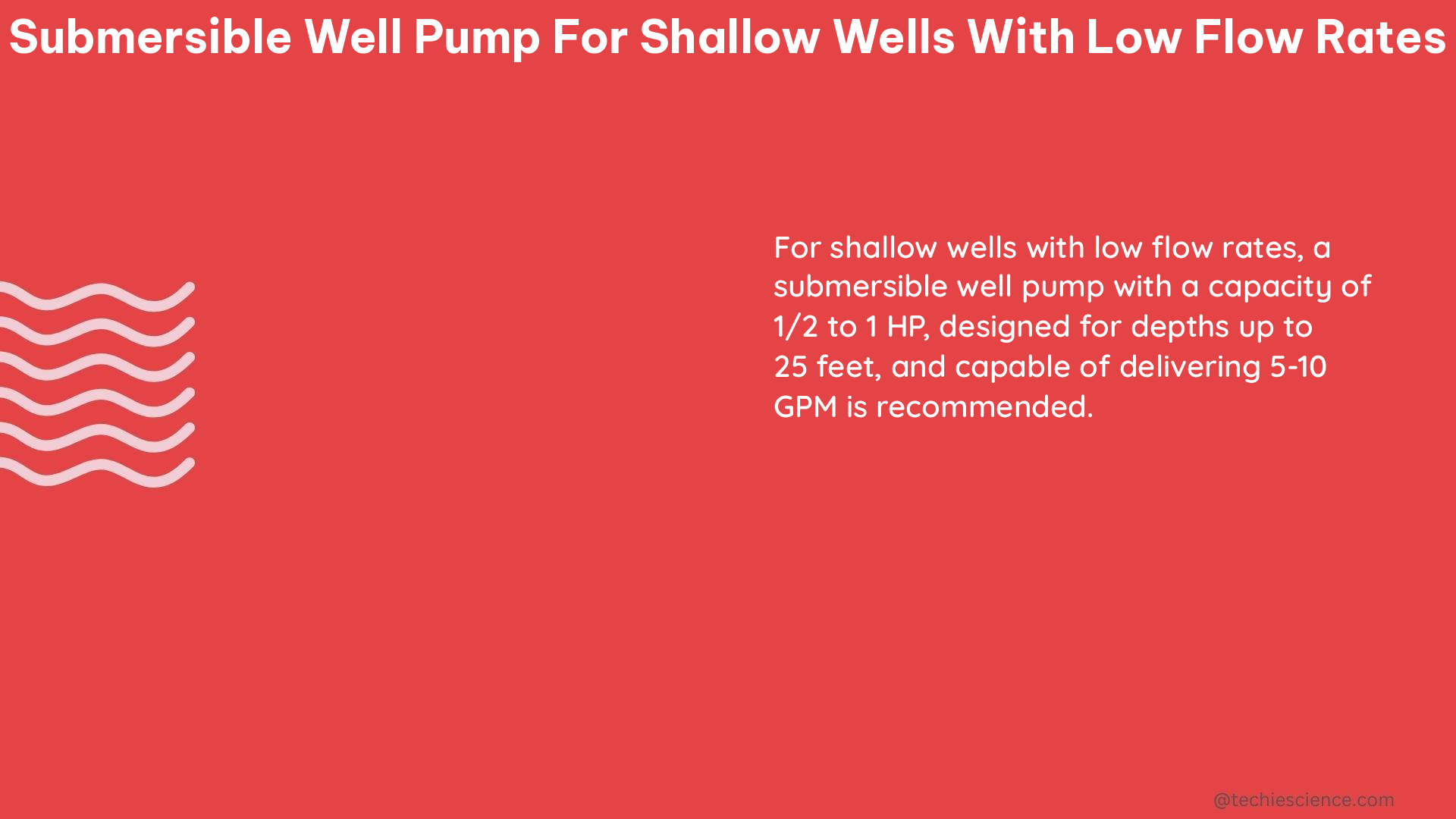Submersible well pumps are a popular choice for shallow wells with low flow rates, as they offer reliable and efficient water delivery. These pumps are designed to operate submerged in the well, providing a compact and discreet solution for residential, agricultural, and industrial applications. In this comprehensive guide, we will delve into the key technical specifications and considerations for selecting the right submersible well pump for your shallow well with low flow rates.
Flow Rate: The Lifeblood of Your Shallow Well
The flow rate is the primary metric that determines the suitability of a submersible well pump for a shallow well with low flow rates. Typically, these wells have a flow rate ranging from 5 to 30 gallons per minute (GPM). It’s crucial to accurately measure the well’s flow rate to ensure the selected pump can meet your water demand. Factors such as well depth, aquifer characteristics, and water table fluctuations can all influence the flow rate, so it’s essential to conduct a thorough assessment before making a purchase.
Navigating Well Depth: The Shallow Well Advantage

Shallow wells, defined as those with a depth of less than 100 feet, present unique challenges and considerations for submersible well pump selection. The well depth can impact the pump’s performance, as it affects the suction lift and the overall system pressure. For shallow wells, the typical drawdown, or the difference in water level before and after the pump is turned on, ranges from 5 to 20 feet. Understanding the well depth and drawdown characteristics is crucial in selecting a pump with the appropriate head capacity to ensure efficient and reliable water delivery.
Power Consumption: Balancing Efficiency and Performance
The power consumption of a submersible well pump is an essential factor, especially for off-grid or remote applications where energy sources may be limited. Submersible pumps for shallow wells with low flow rates typically have power requirements ranging from 0.5 to 3 horsepower (HP) or 375 to 2,250 watts. Selecting a pump with the right power output can help optimize energy usage and minimize operating costs. Additionally, considering the pump’s efficiency, which typically ranges from 50% to 80%, can further enhance the overall system’s energy efficiency.
Water Quality: The Unseen Influence
The quality of the water in the shallow well can significantly impact the performance and longevity of the submersible pump. Factors such as pH, hardness, turbidity, and total dissolved solids (TDS) can all contribute to the pump’s wear and tear. It’s crucial to have the well water tested and understand its characteristics before choosing a pump. Some pumps may be better suited for specific water quality conditions, so it’s essential to consult with manufacturers or industry experts to ensure the selected pump can handle the well’s water quality.
Installation and Maintenance Considerations
In addition to the technical specifications, the installation and maintenance requirements of the submersible well pump are equally important. The size and weight of the pump, the type and length of the power cable, and the accessibility of the well for maintenance and repair should all be taken into account. Proper installation and regular maintenance can help ensure the longevity and optimal performance of the submersible well pump.
Selecting the Right Submersible Well Pump
When choosing a submersible well pump for a shallow well with low flow rates, consider the following key factors:
- Flow Rate: Ensure the pump’s flow rate matches the well’s capacity, typically between 5 to 30 GPM.
- Well Depth: Select a pump with the appropriate head capacity to handle the well’s depth and drawdown, usually less than 100 feet.
- Power Consumption: Choose a pump with the right power output, ranging from 0.5 to 3 HP or 375 to 2,250 watts, to balance efficiency and performance.
- Water Quality: Understand the well’s water characteristics and select a pump that can withstand the specific water quality conditions.
- Installation and Maintenance: Consider the pump’s size, weight, and accessibility to ensure easy installation and maintenance.
By carefully evaluating these factors, you can ensure the selected submersible well pump will provide reliable and efficient water delivery for your shallow well with low flow rates.
Conclusion
Selecting the right submersible well pump for a shallow well with low flow rates requires a thorough understanding of the technical specifications and installation requirements. By considering the flow rate, well depth, power consumption, water quality, and maintenance needs, you can make an informed decision that will provide a reliable and long-lasting water solution for your residential, agricultural, or industrial application.
References:
- Groundwater Sampling Guidelines
- Well Flow Capacity
- Groundwater Technical Guidance Manual
- Submersible Well Pump Sizing
- Submersible Well Pump Buying Guide
- Submersible Well Pump Installation
- Submersible Well Pump Maintenance

The lambdageeks.com Core SME Team is a group of experienced subject matter experts from diverse scientific and technical fields including Physics, Chemistry, Technology,Electronics & Electrical Engineering, Automotive, Mechanical Engineering. Our team collaborates to create high-quality, well-researched articles on a wide range of science and technology topics for the lambdageeks.com website.
All Our Senior SME are having more than 7 Years of experience in the respective fields . They are either Working Industry Professionals or assocaited With different Universities. Refer Our Authors Page to get to know About our Core SMEs.